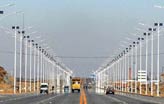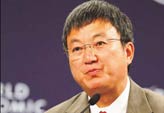China Mobile gets US boost
Updated: 2011-09-15 07:48
By Shen Jingting (China Daily)
|
|||||||||
|
|
DALIAN - Clearwire Corp, the biggest WiMax network operator in the United States, has made it clear that it will turn to China's homegrown fourth-generation (4G) mobile-communication technology, said Wang Jianzhou, chairman of China Mobile Communications Co.
Clearwire's plan to deploy the Long Term Evolution Time Division Duplex (LTE TDD) international 4G standard developed and promoted by China Mobile, which it calls TD-LTE, shows strong support for the Chinese technology going global.
"The globalization of TD-LTE technology has already become a reality," Wang told China Daily on the sidelines of the World Economic Forum in Dalian on Wednesday.
China Mobile has signed agreements with 32 international telecom carriers to help deploy 27 TD-LTE trial networks worldwide, according to a company statement. Five carriers are already setting up TD-LTE commercial networks.
The Japanese operator Softbank Telecom Co is setting up the world's first commercial TD-LTE network and expects to complete the project by the end of the year.
Clearwire, which expects to cover 270 million people in the United States with its service, will cooperate with China Mobile to develop the technology and strengthen the TD-LTE industry chain.
Clearwire's adoption of the technology indicates that it has started to follow its two bigger rivals in the United States, AT&T Inc and Verizon Wireless, in turning to an LTE network, as WiMax technology users decline due to its weak industry support.
WiMax and LTE, which includes LTE TDD and LTE Frequency Division Duplex (LTE FDD), were both approved as 4G standards at an International Telecommunication Union (ITU) conference in southwestern Chongqing in October.
Wang said he was really glad to see carriers in India, the Middle East and Africa, showing similar interest in adopting TD-LTE technology, while at the same time he was worried about the risk of TD-LTE being left behind by FDD technology.
"In major cities in the United States, people can buy FDD terminals now. The commercialization process of FDD technology is really fast," Wang said.
Though China Mobile has been developing TD-LTE technology since late 2007 and has launched large-scale tests in seven Chinese cities since January, the company still cannot put the technology into commercial use due to government restrictions.
Miao Wei, minister of industry and information technology, said in March "it will still take three to five years" before China will begin the large-scale commercial use of the 4G service. "We are summarizing the results of the first large-scale test that ended this month, and we hope to start the commercial trials as early as possible."
The GSM Association, the world's largest mobile operators association, has predicted that China will have 58 million subscribers for the next generation LTE networks by 2015.











